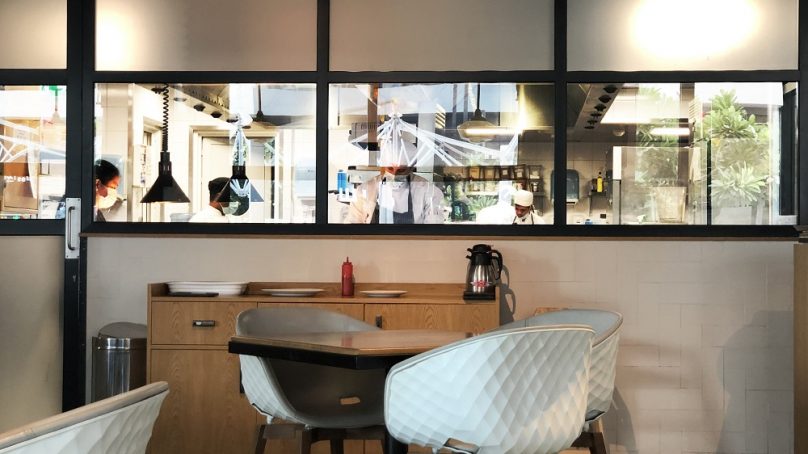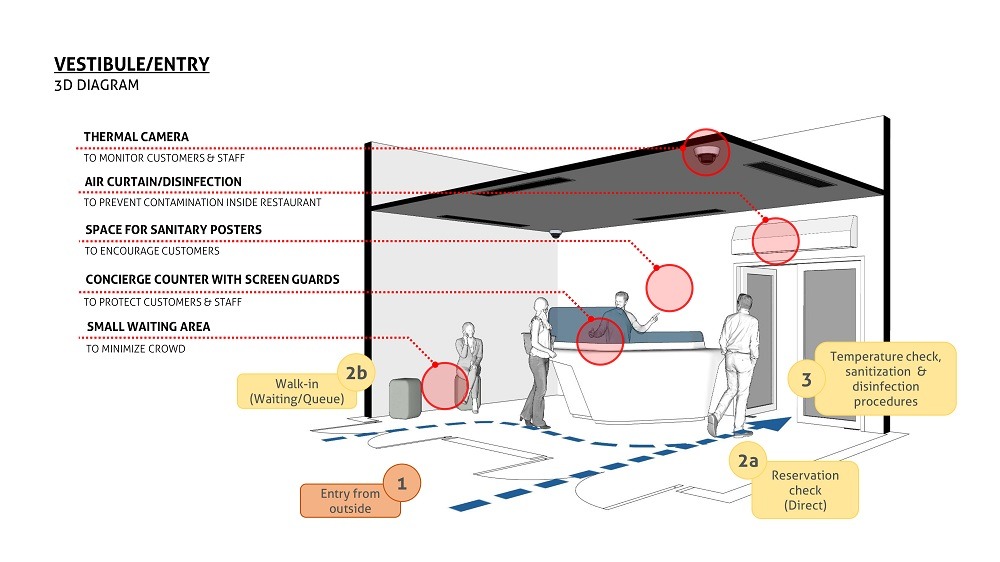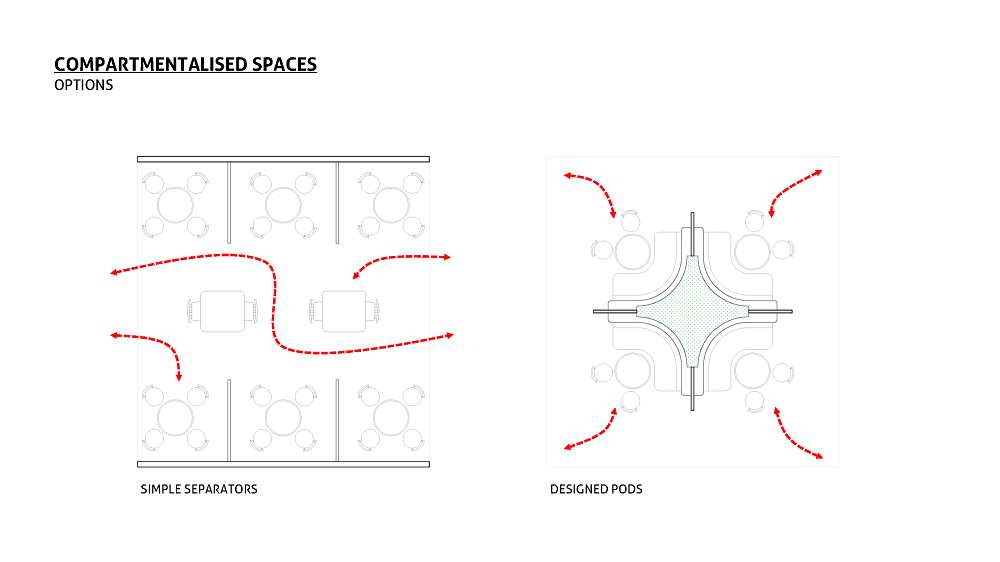
Operating a restaurant in this new normal is unfortunately far from normal, at least for now, but even when a vaccine becomes available one thing is clear; the F&B sector will need to evolve quickly and effectively to ensure its long-term growth and sustainability. Over the past few months, we have come together as a collective of consultants in the UAE to look at learnings from this global pandemic with the aim to develop ‘future proof’ recommendations and solutions that address not only the current back-to-business requirements, but also the changes needed in the design and best practices for future F&B developments to be prepared for other health crises that may test the F&B industry. We looked at critical areas such as design and material specifications, front-of-house flows and spacing, back-of-house design and functionality, as well as hygiene and cleaning protocols. Here are three key design changes we foresee, which are discussed in the white paper.
The future of the vestibule
An important part of the dining experience is the environmental design, which has progressed in leaps and bounds, and that momentum needs to be maintained. There is a need to address functional changes in F&B outlets, but this should not stifle the creative freedom of the designer. We foresee that the importance of the vestibule, as an entry point to the restaurant floor, will be amplified to contain more functionality than it does currently. The key change being the separation of ingress and egress. This can be achieved through a physical separation with seepage air handling system to minimize the chance of cross contamination.
First impressions last forever and the manner in which a customer arrives at a restaurant and is welcomed, will set the tone for the rest of their visit. The arrival experience in the future must combine two aspects: safety and comfort/convenience. Those businesses that can design and shape the arrival experience in such a way that the customer doesn’t notice the extra hygiene and safety precautions in place will be a step ahead of the competition.
Rethinking hand wash areas and restroom design
Historically, hand wash basins have always been contained within a facility’s restrooms. These will now have to be treated as a separate entity in the building design and should be introduced in more locations with access to liquid soap and hand drying provisions. Careful attention should be given to the aesthetic qualities however, to ensure that these facilities don’t become a hindrance. The number of basins can be calculated by a ratio to the number of seats in a restaurant. It is also important that they are distributed strategically around the outlet based on circulation, visibility and adjacency to amenities. The design should include open vestibules so there is no contact with entrance doors and minimal interaction with other customers. Ideally, the toilets and hand wash basins should be contactless and sensor operated.
Design standards and space requirements
This is bound to be a contentious topic for restaurant owners. There are calls to reduce the number of tables within the dining space, but this can realistically only be seen as a short-term solution as it is not financially sustainable. However, certain standards and seating permutations can be altered to minimize contact between diners. Most establishments have open-plan seating with minimal physical separation between tables. While booth seating solves several problems and may be encouraged in the future, the open hall will not go away. These spaces can be compartmentalized either through well designed physical barriers or through wider space buffers between the groups. The goal is to minimize the numbers of people grouped within a particular zone. The planning and design challenge is to maintain the number of seats to ensure the restaurant is economically viable.
One of the biggest issues of a pandemic is the fear that a customer carries it with them into any establishment. This is largely psychological and understandable. Open see-through kitchens could alleviate some of those concerns by ensuring that the customer can see where and how their food is being prepared. A clean and hygienic workplace will be a standard expectation going forward. The only design challenge here is to ensure that the designer can curate what the patron sees.
Clearly this is a very trying time for the hospitality industry, and we’re faced with critical challenges. Some of these we’ve not encountered before and are now thrust into the spotlight, whilst others are long overdue for change. As an industry we need to respond to the global shift in the needs and wants of the sector and focus on restaurant design that ensures the health and safety of diners.
About the Authors:
A collective of three Dubai-based consultancy firms have developed an industry white paper on the topic: ‘Designing a Safer Future – How the Food & Beverage industry can be better prepared for another pandemic’, tackling critical considerations ranging from design standards, material specifications and space requirements to hygiene improvements, technology solutions and cost management without limiting the functionality or guest experience. The paper’s three collaborators are F&B Development Consultants RBnH Solutions, boutique strategy & design agency Limelight and project development and MEP consultants CSQ.




















